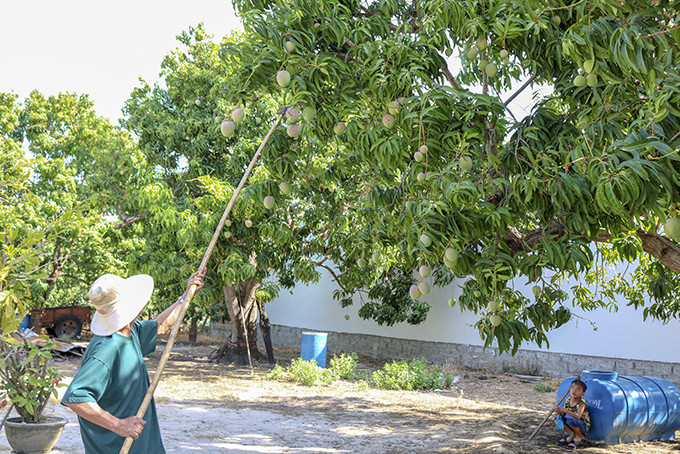
The mango supply chain of Cam Lam has just been established, showing positive signs. However, in order to be effective and sustainable, the mango supply chain needs more support.
The mango supply chain of Cam Lam has just been established, showing positive signs. However, in order to be effective and sustainable, the mango supply chain needs more support.
Cam Lam District now has nearly 5,500 hectares of mangoes, about 85% of which are being harvested. With a common yield of 8.2 tons/ha, each year, Cam Lam, the largest mango area in Khanh Hoa Province, produces about 38,000 tons of fresh mangoes.
More than 1 year ago, many mango growers in Cam Lam District determined to plant mangoes according to VietGAP standards. Specifically, the cooperative groups for planting mangoes like Cam Hai Tay - Cam Duc, Cam Hiệp Bắc, Cam Hiep Nam and Khanh Hoa Food have applied good agricultural production practices on an area of over 60ha. Thanks to strict compliance with safe farming standards, by the end of 2019, the mango products of the cooperative groups have been certified by the competent authorities to meet VietGAP standards. Besides, the sweet mangoes of these cooperatives are also supported by a specialized agency to support the traceability process through QR code. Another important link that is added to the clean mango production chain is Khanh Hoa Food One Member Limited Company taking over the product, preliminary processing and taking care of the market.

|
Recently, Mr. Le Tan Ban - Director of Department of Agriculture and Rural Development (MARD) together with leaders of People's Committee of Cam Lam district and professional units organized to understand the model of VietGAP mango production chain. Cam Lam. According to the mango growers, in recent years, the State has been interested in implementing the project of bringing irrigation water to Cam Lam mango area, but until now, the water source from reservoirs such as Suoi Dau, Cam Ranh, Ta Ruc has yet to return to most of the district's mango planting area. In addition, the mango gardens do not have a 3-phase electricity system, making it difficult for people to invest in equipment, machinery for mango irrigation and tending.
According to the reporter's study, the project brought water to serve mango irrigation on the basis of upgrading the canal system from 2 lakes of Suoi Dau and Cam Ranh, belonging to the project of Improving water efficiency for provinces affected by drought. drought of the Ministry of Agriculture and Rural Development. The project sets an expectation of 85% active water supply for 4,000ha of mangoes and 2,000ha of rice and vegetables in Cam Lam. By the end of 2019, the project is still in the stage of consulting contractor selection. Meanwhile, the project to build the main canal of the northern wing of Ta Ruc reservoir (capable of bringing irrigation water to Cam Lam mango area) is also in the stage of waiting for capital.
“In order to promote the value of Cam Lam mangoes, in the coming time, the Department of Agriculture and Rural Development will continue directing professional units to implement programs, projects and projects to support the development of Cam Lam mangoes. sustainable direction. In particular, to build a water supply system so that the mango-producing areas in Cam Lam can take initiative in irrigation water; suggest to the provincial People's Committee to pay attention to and direct concerned agencies and units to support the draw of electricity to production areas for people. Regarding the consumption of mangoes, the department continues to direct the local specialized support units and businesses to promote the brand, develop the domestic market and seek more export markets ”, Mr. Le Xun Ban said.
Hong Dang
Translated by T.T






